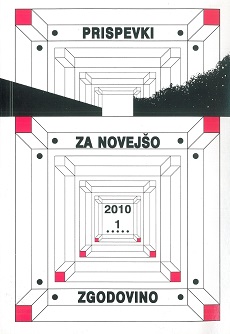Sovjetizacija Vzhodne Evrope po drugi svetovni vojni
Sovietisation of Eastern Europe After World War II
Author(s): Žiga KoncilijaSubject(s): Political history, Government/Political systems, International relations/trade, Post-War period (1950 - 1989), History of Communism, Geopolitics
Published by: Inštitut za novejšo zgodovino
Keywords: Europe; bloc division; Eastern Bloc; Sovietisation; communism; socialism; Poland; Czechoslovakia; Hungary; Romania; Bulgaria;
Summary/Abstract: For the world as well as Europe the end of World War II meant a radical transformation of the geopolitical reality. The world was divided into two strong blocs with antagonistic socio-political, economic, cultural and other characteristics. On one hand, the United States encouraged parliamentary democracy with market capitalism, while the USSR sought solutions in the people's democracy, nationalisation of economy and abolishment of private property. The following contribution outlines the Eastern European countries that found themselves at the threshold of the new socialist future following the "agreement" between the superpowers. The march of the Red Army far towards the west and with it the returning communists and simultaneous strengthening of the local Communist Parties enabled the effective and decisive Sovietisation of these countries. In his contribution the author focuses on the depiction of the processes of the political Sovietisation of Poland, Czechoslovakia, Hungary, Romania and Bulgaria. Sovietisation, which roughly took place in three stages, depended on many internal and external factors. Therefore it differed from country to country up to a certain degree, but the outcome was the same everywhere. These states became a part of the Eastern Bloc - Soviet satellite states.
Journal: Prispevki za novejšo zgodovino (before 1960: Prispevki za zgodovino delavskega gibanja)
- Issue Year: 50/2010
- Issue No: 1
- Page Range: 157-176
- Page Count: 20
- Language: Slovenian

